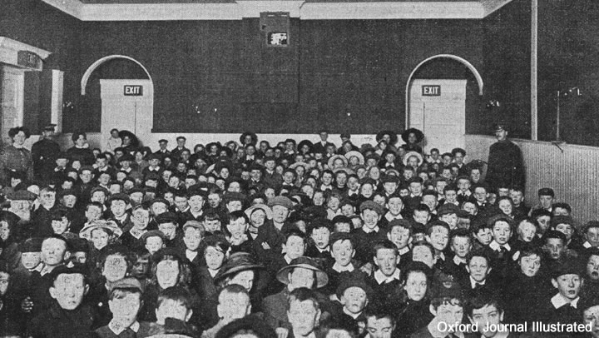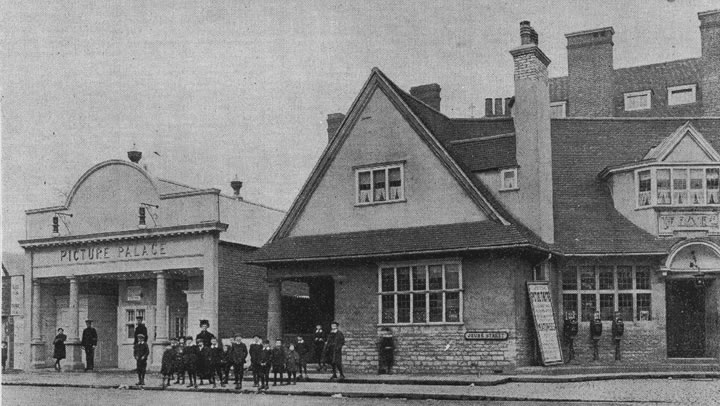Saturday afternoon we had the opportunity of visiting the East Oxford Picture Palace, when some hundreds of children were enjoying a matinee. We have never seen a large body of youngsters more elated, nor have we heard topical songs sung with greater vigour. Time and space were cast entirely aside, and whereas “Fall in and follow me” was the refrain when we started for Pretoria and the great falls in the heart of Africa, we sang “Kelly” in the backwoods of America at the conclusion of a farcical skit on ranching life.

The happiness of the children was our first thought, but as they filed out at the conclusion of the entertainment we were able to pay more attention to the building in which they had been entertained. Mr. Stuart claims for the East Oxford Picture Palace that it is one of the best appointed in the provinces. It certainly excels in design, general dimensions, and in personal comfort many of the popular houses in the heart of London. East Oxford is indeed fortunate, and as the Cowley-road trams practically pass the doors, we can see East Oxford drawing patrons from all parts of the city.
The interior of the Picture Palace is spacious and designed specially for the safety and comfort of the visitors. There is ample seating accommodation for 400 at each performance. tip-up fauteils being provided, as in the highest class theatres, for the highest priced seats. The floor is of parquet, dry, warm and comfortable, and an equable temperature, without draughts, is provided by six radiators. Ventilation is carried out on the latest scientific lines, so that there is never any suggestion of stuffiness. Four exits and several chemical fire-extinguishers figure amongst the precautions against fire. The cinematograph itself is placed in a fireproof room, well above the heads of the spectators and some 54ft. from the screen on which the pictures are shown. Even the peepholes through which the pictures are projected close automatically in the case of an ontbreak of fire, but such a thing is practically impossible with the machine now in use, and in any case only four inches of the film would burn instead of the complete film, as hitherto.

Mr. Stuart shows on on average about 3,500ft. of film at each entertainment, nearly two-thirds of a mile, and the subjects are changed nightly. Nothing of topical interest is missed, and so intent are the proprietors upon giving their patrons the very latest and best that they have already arranged to reproduce the Oxford and Cambridge Boat Race the same evening, and the Coronation procession in London on the day of the event. If you have an odd hour any evening and want to spend it to advantage, run down to the East Oxford Picture Palace. You will not regret it.
Excerpt from: The Cinematograph as an Entertainment, Oxford Journal, Wednesday 15 March 1911